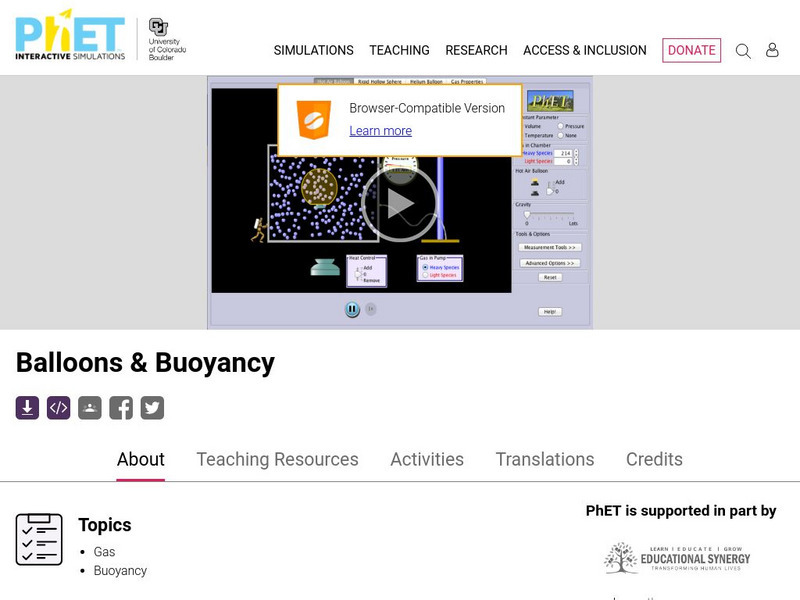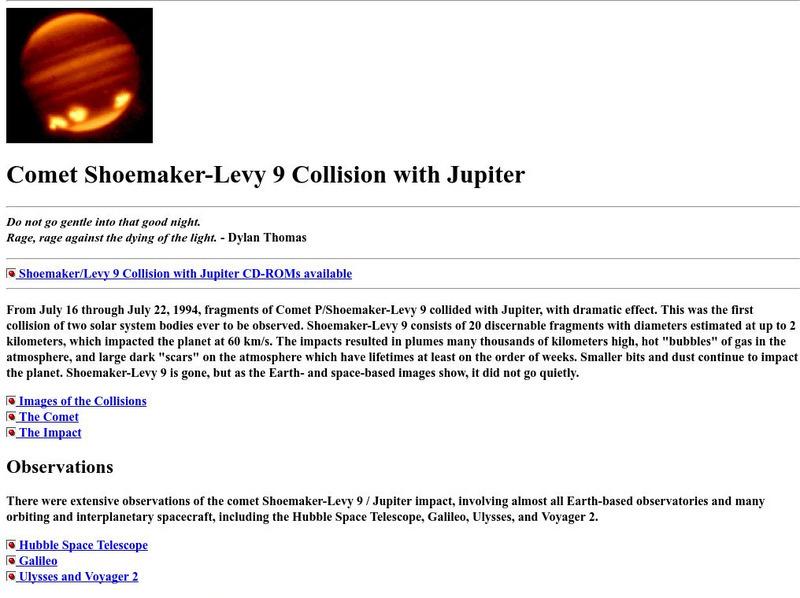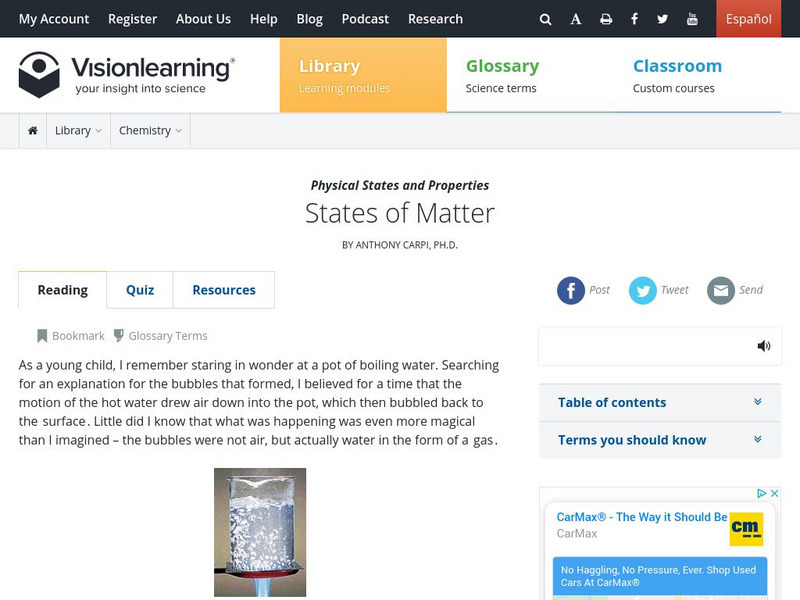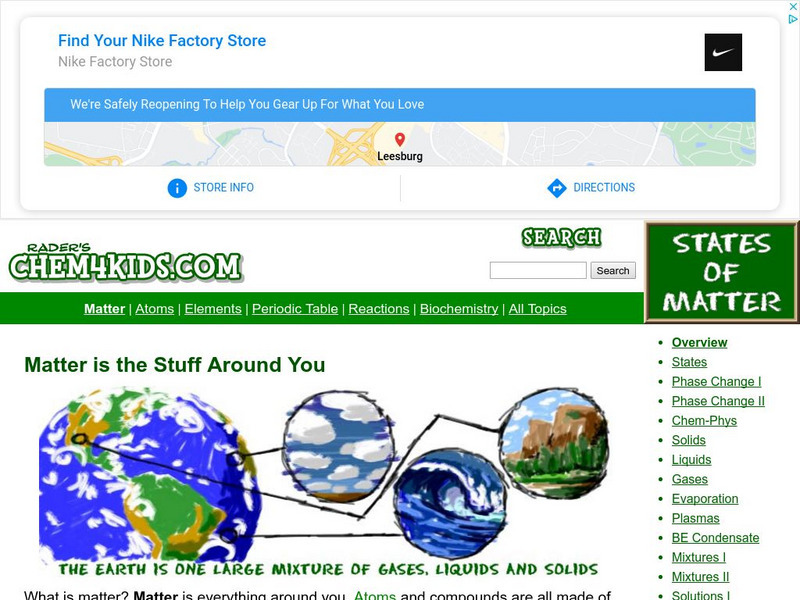American Chemical Society
Middle School Chemistry: Chapter 5: The Water Molecule and Dissolving
Nine exemplary chemistry lessons about the water molecule and dissolving complete with handouts and animations.
University of Colorado
University of Colorado: Ph Et Interactive Simulations: Balloons & Buoyancy
Experiment with a helium balloon, a hot air balloon, or a rigid sphere filled with different gases. Discover what makes some balloons float and others sink.
University of Colorado
University of Colorado: Ph Et Interactive Simulations: Reversible Reactions
Watch a reaction proceed over time. How does total energy affect a reaction rate? This model represents an analogy of chemical reactions.
Other
Bp: Home Page
Very user-friendly site from BP Oil company that is easy to find the information about the oil industry. The front page even lists the current stock price at the very minute you are looking at the site.
Other
Sheffield Hallam University: Gas Chromatography
This page uses diagrams and charts along with written text to explain gas chromatography.
Other
Marathon Oil Corporation
Find out about Marathon Oil Company, and the many other branches of this company. You can find out what their vision for the future is, who they are, what they do, and whatever else you need to know about them. There is an informative...
University of Oxford (UK)
University of Oxford: A View From a Distant Universe
An eBook containing information regarding states of matter as it applies to celestial bodies and a universe.
University of Colorado
University of Colorado: Ph Et Interactive Simulations: University of Colorado: Gas Properties
Pump gas molecules to a box and see what happens as the volume changes, add or remove heat, change gravity, and more. Measure the temperature and pressure, and discover how the properties of the gas vary in relation to each other....
Georgia Department of Education
Ga Virtual Learning: Fluids
In this interactive module you will be introduced to a unit on fluid dynamics. Learn how an object's density relates to its mass and volume by completing various activities and interactives.
Curated OER
Kids Health: Indigestion
Heart burn, indigestion, tummy aches are all things that kids can experience. Read some reasons for getting indigestion, and some ways to avoid tummy turmoil.
TeachEngineering
Teach Engineering: Rocket Power
By making and testing simple balloon rockets, students acquire a basic understanding of Newton's third law of motion as it applies to rockets. Using balloons, string, straws and tape, they see how rockets are propelled by expelling...
Texas Education Agency
Texas Gateway: Classification of Matter by Composition
The following tutorial provides an explanation of classification of matter by composition.
NASA
Nasa Space Science Data Archive:comet Collision With Jupiter
Comet collision with Jupiter with lots of pictures and some text. Links to the information about the comet, the impacts, and observations made by four different spacecraft.
Nobel Media AB
The Nobel Prize: The Nobel Prize in Physics 1910 Award Ceremony Speech
Here is the full text of the 1910 Nobel Prize in Physics presentation speech. given by Professor O. Montelius. It describes Johannes Diderik van der Waals' scientific contributions, which earned him the Nobel Prize in Physics.
Vision Learning
Vision Learning: States of Matter
Did you know the ancient Greeks first identified the three states of matter? Read about how the molecules differ in solids, liquids, gases, and plasma. View photographs and watch how the molecules move in each state. If you're really...
Chem4kids
Chem4 Kids: Matter
"Matter is everything." So begins this comprehensive website on the physical and chemical properties of matter in its four main states: solids, liquids, gases, and plasmas. The text is large and easy-to-read. Students will enjoy the...
Texas Education Agency
Texas Gateway: Kinetic Molecular Theory
[Accessible by TX Educators. Free Registration/Login Required] This resources allows students to explore the postulates of the Kinetic Molecular Theory in order to better understand why gas particles behave the way that they do.
Chem Tutor
Chem Tutor: Graham's Law of Diffusion (Or Effusion)
A decent site with a good explanation of Graham's Law of diffusion. Includes the formula for this law and some sample problems at the bottom of the page.
Concord Consortium
Concord Consortium: Stem Resources: States of Matter
Using simulations observe what solids, liquids, and gases look like at the atomic scale. After observing the different states of matter at their atomic level, students will be able to conclude about the forces and attractions that exist...
McGraw Hill
Mc Graw Hill Learning Center: Gas Laws and Kinetic Energy
From the companion web site for the Contemporary College Physics textbook. An ideal gas law simulation in which the motion of individual particles inside a closed container is simulated. The number of particles, external pressure, and...
Utah Education Network
Uen: Water Magicians
First graders observe water changing states from a solid to a liquid to a gas.
Utah Education Network
Uen: Water, Water Everywhere
Discussion of the various ways we rely on water.
US Department of Energy
Doe: Fossil Energy: Education Start Page
Overview of the fossil energy industry (oil, gas, coal) with detailed descriptions of the processes and the work of the people employed in the industry.
PBS
Pbs Learning Media: Mechanical Waves
Learn about mechanical waves, which transfers energy from one place to another through liquids, gases and solids, with this interactive lesson.




















